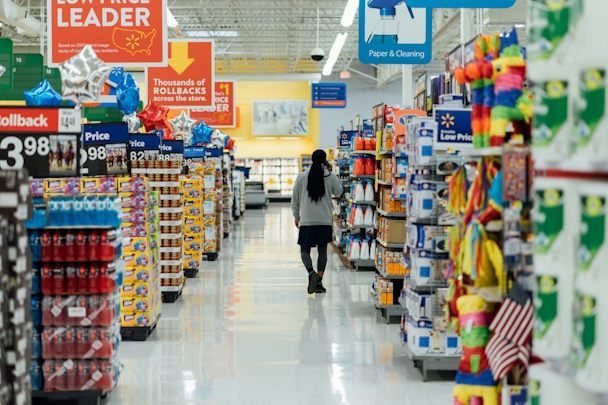From apples to ads: how retailers can build successful retail media offerings
Retail media is experiencing a boom, says Anders Hjorth of EPAM Continuum. The shift to advertising can require a lot from retailers, who could do worse than follow these key steps.

Retail media allows brands to promote their products in-store, online, or on a retailer’s app / Hanson Lu via Unsplash
Retail media is a top priority for many retailers in 2024, as it offers the prospect of generating additional high-margin revenue with high margins. While retail media is advertising, it requires an entirely different skill set, new technology, data handling, and a redefinition of interactions along the customer journey.
At the Retail & E-Commerce Forum in Paris earlier this year, EPAM Continuum shared a stage with Gwenola Coicaud, director of Kingfisher Retail Media, to discuss experiences on building retail media programs from a commercial, organizational, and technological point of view.
Want to go deeper? Ask The Drum
Retailer realities
Retailers today face four realities related to margins, digitalization, data handling, and advertiser expectations. Firstly, operating margins are low. American food retailers operate at a margin below 2%, as an example.
Next, more and more retail is online. In the six largest European countries, ecommerce by retailers rose from 7% in 2014 to 17% in 2022. Thirdly, with the diminishment of third-party cookies and the rise of more stringent privacy regulations, directly collected data is essential for improved media performance and better user experience.
Advertisement
Lastly, the expectations of major advertisers have grown. Retailers are now perceived similarly to publishers and are therefore increasingly considered in media plans.
Looking into how you succeed at retail media, Coicaud discussed the three-step approach Kingfisher has pursued to meet the commercial challenges brands face:
- Stimulate "data collaboration" between suppliers and retailers. Capitalize on customer knowledge and analysis of purchasing paths, inventory management, and seasonality and synchronize this with brands’ communication and promotion plans. More than ever, data is key.
- Propose innovative advertising formats by marking out the online and offline purchasing paths of high-potential customers.
- Measure each device and optimize in real-time according to success criteria defined by advertisers.
Innovative challenges
Even with a clear roadmap in mind, building a retail media program is a complex matter, and several challenges must be addressed.
Firstly, business processes change when suppliers become advertisers. The entire dynamic with the retailer shifts, requiring new ways of working and a new organizational structure. As the retail media network matures, a dedicated new business unit may emerge.
Secondly, technology represents a major ongoing challenge: advertisers want to reach customers "on-site" but also "offsite" and "in-store" or in a complete "omnichannel" context. The related customer touchpoints might be managed via different technology solutions that need to be integrated and coexist with existing commerce platforms.
In the current environment, retailers must also consider how artificial intelligence (AI) can play a role in automating processes and improving user experience and advertiser outcomes.
A retailer’s data can be spread across many systems and will not necessarily allow for the single view of the customer that advertisers aim for. Making the right data available for the right process is not as easy as it sounds. And finally, the retail media network must find ways to commercialize its constantly evolving proposition efficiently while satisfying new advertisers.
As the retail media business scales, having a robust technology strategy becomes essential to navigate the complexity of multiple platforms, manual processes, fragmentation, and lack of standardization. In this respect, EPAM recently launched a partnership with Google to help retailers orchestrate their retail media data and processes via a solution hosted on Google Cloud called the Retail Media Orchestration Toolkit.
Advertisement
Digital revolution
Retail media is evolving quickly and provides mature solutions in some areas, such as onsite display and search, whereas others, such as digitally connected screens, are still emerging. It’s therefore striking to see that retail media is already becoming a preferred channel for advertisers. According to a study published in February, American advertisers consider retail media more important than paid search. Europe is set to follow suit.
Retailers and manufacturers alike will have to reinvent themselves and act together to keep pace with these changes.
Content by The Drum Network member:

EPAM Continuum
Our diverse, integrated consulting teams apply a Systems Thinking mindset to get to the heart of our clients’ increasingly complex business challenges.
Our...

